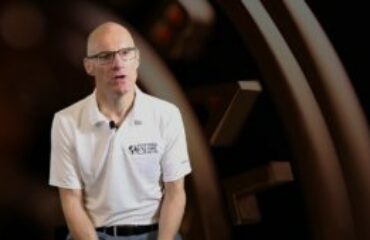Frequent repetitions of high intensity movements that involve significant musculoskeletal forces and joint loads can result in between-limb asymmetry in functional performance where preferred lower-limb dominance may be evident. However, research investigating the association between asymmetry and athletic performance has shown equivocal findings (“trivial-moderate” association between asymmetry and performance task). In addition, when interpreting studies investigating the association between jump asymmetry and athletic performance, it should also be noted that all studies have been conducted at a single time point. In fact, the long-term association between asymmetry and performance measures is unknown.
“Research investigating the association between asymmetry and athletic performance has shown equivocal findings”
In this sense, the aims of this study were twofold: (a) to determine the association between jump asymmetry and measures of speed and CODS performance at different time points during a competitive soccer season and, (b) to determine whether any observed changes in asymmetry were associated with changes in speed and CODS performance.
Eighteen elite male under-23 academy soccer players performed unilateral countermovement jumps, unilateral drop jumps (DJ), 10- and 30-m sprints, and 505 CODS tests at pre, mid, and end of season.
RESULTS
- No significant relationships were evident during preseason or midseason between asymmetry and speed or CODS performance.
- Significant correlations were shown at the end of season between DJ height asymmetry and 10-m sprint time (ρ = 0.62; p = 0.006) and 505 time on the right limb (ρ = 0.65; p = 0.003), indicating that larger jump height asymmetries are associated with slower acceleration and CODS performance.
- Kappa coefficients showed varying levels of agreement between changes in asymmetry and changes in performance tasks across the season (table below).
- No significant correlations between changes in asymmetry and changes in speed or CODS were evident at any time point.
Table 1 (number 3 in full text): Kappa coefficients and descriptive levels of agreement for the changes in asymmetry during both jump tests and changes in performance between time points.*

*L = left; R = right; UCMJ = unilateral countermovement jump; CON = concentric; UDJ = unilateral drop jump; RSI = reactive strength index; CODD = change of direction deficit.
FSI STATEMENTS
- The data suggests that the performance and asymmetry of an action offer valuable but unrelated data between them. In other words, if jumping asymmetry increases during a predefined period, it does not dictate that sprint and CODS will be negatively affected.
“The performance and asymmetry of an action offer valuable but unrelated data between them”
- The large variability and inconsistency in agreement between test sessions (table above), suggesting that asymmetry measured using jump tests seems to be largely independent from running based measures of athletic performance.
- According to the authors of this work, asymmetry measured using commonly applied jump metrics should not be considered from a performance reduction perspective. Instead, monitoring changes in jump performance scores are advised longitudinally, rather than using associated ratio data, such as asymmetry.






You must be logged in to post a comment.